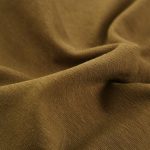Are your clothes always wrinkled no matter how much you iron them? Look no further! In this article, we will guide you through the approved methods for ironing fabric effectively.
Discover the secrets to choosing the right iron, preparing your fabric, and setting the correct temperature. We’ll also show you how to use steam or spray bottles and share ironing techniques for different types of fabrics and garments.
Say goodbye to wrinkles with these helpful tips and tricks!
Table of Contents
Choosing the Right Iron
First, consider the size of the iron you need for your ironing needs. Choosing the right iron is essential for achieving wrinkle-free clothes and ensuring the safety of your fabric. The size of the iron should be proportional to the size of the garments you typically iron. If you often iron large items like bed sheets or curtains, a larger iron with a wider soleplate will make the task easier and more efficient. However, if you primarily iron smaller items like shirts or dresses, a smaller iron with a narrower soleplate will provide better control and precision.
In addition to size, it’s important to consider safety precautions during ironing. Always read the manufacturer’s instructions and follow them carefully. Make sure to plug in your iron in a safe and secure outlet, away from water sources. Never leave a hot iron unattended, as it can be a fire hazard. When not in use, always turn off and unplug the iron. Keep the iron out of reach of children and pets to prevent accidents. Lastly, avoid ironing near flammable materials and always check the fabric care label for any specific ironing instructions.
Preparing Your Fabric
To effectively prepare your fabric for ironing, start by examining the garments for any specific care instructions. These instructions will provide guidance on how to handle the fabric pre-treatment, if necessary. Some fabrics may require special treatments, such as pre-washing or pre-soaking, to remove any stains or to soften the fabric. Following these instructions will ensure that your fabric is in the best condition for ironing.
When ironing a linen and cotton blend fabric, it’s important to take extra care. Begin by checking the fabric label for any specific ironing instructions. Set your iron to the appropriate temperature for the fabric blend. It’s best to start with a lower temperature and gradually increase if needed. To prevent any damage or scorching, use a press cloth or a clean cotton cloth between the iron and the fabric. This will provide a protective barrier and help to evenly distribute heat.
Setting the Correct Temperature
To effectively iron different fabrics, it’s crucial to set the correct temperature on your iron. Each fabric has its own recommended temperature range that ensures effective wrinkle removal without causing heat damage.
Temperature for Different Fabrics
To iron fabric effectively, it’s crucial to set the correct temperature for different types of fabrics. When ironing polyester and acrylic, it’s best to use a low to medium heat setting. These fabrics are sensitive to high temperatures and can melt or get damaged easily. It’s advisable to iron them inside out or place a cloth between the fabric and the iron to protect it.
On the other hand, when ironing wool and cashmere, it’s recommended to use a medium to high heat setting. These fabrics can tolerate higher temperatures and require steam to remove wrinkles effectively. Always check the care label on your garments for specific instructions and adjust the temperature accordingly.
Avoiding Heat Damage
To avoid heat damage when ironing fabric effectively, it’s important to set the correct temperature for different types of fabrics.
One common concern when ironing is preventing scorch marks, especially when working with delicate fabrics like polyester. Polyester is susceptible to heat damage, so it’s crucial to set the iron to a low or medium heat setting. Higher temperatures can cause the fabric to melt or warp, leaving unsightly marks that are difficult to remove.
Always check the care label on your polyester garments to determine the appropriate temperature setting. By being mindful of the heat and using the correct temperature, you can safely iron polyester fabrics without the risk of heat damage.
Using Steam or Spray Bottles
Achieve wrinkle-free results by incorporating steam or spray bottles into your ironing routine.
While ironing without steam is possible, using steam or spray bottles can make the process much easier and more effective. These methods provide extra moisture to the fabric, helping to relax the fibers and smooth out wrinkles.
When using steam, make sure to follow the instructions for your specific iron model. Fill the water reservoir, set the iron to the appropriate temperature, and press the steam button as you glide the iron over the fabric. The steam will penetrate the fabric, releasing stubborn wrinkles.
If you don’t have a steam iron, a spray bottle can be a great alternative. Simply fill the bottle with water, mist the fabric lightly, and then iron as usual. The moisture from the spray bottle will create steam as the hot iron comes into contact with the damp fabric. This method can be especially useful for delicate fabrics that are easily damaged by direct steam.
Ironing Different Types of Fabrics
Now let’s talk about ironing different types of fabrics.
When it comes to delicate fabrics, such as lace or chiffon, you’ll want to use a lower heat setting and place a pressing cloth between the iron and the fabric to avoid any damage.
It’s also important to consult a heat settings guide to ensure you’re using the appropriate temperature for each fabric type.
For silk and satin, be sure to use a low heat setting and avoid applying too much pressure to prevent any potential damage to the delicate fibers.
Delicate Fabric Ironing
Make sure you have the right ironing techniques for ironing different types of delicate fabrics. Delicate fabric care is essential to prevent fabric damage and maintain the quality of your clothes. Here are some tips to help you iron delicate fabrics effectively:
-
Adjust the heat setting: Lower the temperature on your iron to prevent scorching or melting delicate fabrics like silk or chiffon.
-
Use a pressing cloth: Place a thin cotton or muslin cloth between the iron and the fabric to protect it from direct heat.
-
Steam with caution: Steam can be beneficial for removing wrinkles, but be careful not to overdo it as excessive moisture can harm delicate fabrics.
Heat Settings Guide
To effectively iron different types of fabrics, what heat settings should you use? Choosing the right iron and preparing your fabric are crucial steps in achieving wrinkle-free results. The heat setting you select should be determined by the fabric type to avoid any damage. Here is a helpful guide to assist you:
| Fabric Type | Heat Setting |
|---|---|
| Cotton | High |
| Linen | High |
| Silk | Low |
| Wool | Low |
| Polyester | Medium |
| Rayon | Low |
| Nylon | Low |
Remember to always check the care label on your garment for specific ironing instructions. Additionally, it is recommended to use a pressing cloth on delicate fabrics to prevent any shine or scorch marks. By following these heat settings, you can ensure that your fabrics are ironed to perfection.
Ironing Silk and Satin
When ironing silk and satin, it’s important to adjust the heat setting accordingly based on their delicate nature. These fabrics require extra care to avoid damage and maintain their smooth appearance.
Here are some tips to help you iron silk and satin effectively:
-
Ironing pleated silk: To iron pleated silk, place a cloth over the pleats and gently press with the iron on a low heat setting. Avoid applying too much pressure to prevent flattening the pleats.
-
Removing wrinkles from satin: Hang the satin garment in a steamy bathroom for a few minutes to allow the wrinkles to loosen. Then, use a cool iron to gently press the fabric, moving the iron in the direction of the grain to avoid creating shiny spots.
-
Test a small, inconspicuous area: Before ironing the entire garment, test a small area to ensure the heat setting is appropriate and doesn’t damage the fabric.
Ironing Techniques for Different Garments
To effectively iron different garments, you should frequently adjust the temperature and steam settings based on the fabric type and follow proper ironing techniques. This ensures that you achieve the best results while avoiding damage to your clothes. Two common fabrics that require specific ironing techniques are linen and wool.
When ironing linen, it is important to set your iron to a medium-high temperature. Linen is a sturdy fabric that can withstand higher heat, but be careful not to set it too high as it may scorch. Use steam to remove wrinkles effectively, and iron both sides of the fabric to ensure evenness.
For wool, it is crucial to use a low temperature setting on your iron. Wool is a delicate fabric that can easily shrink or become misshapen if exposed to high heat. To prevent this, place a damp cloth over the wool garment and iron over it gently. This helps to protect the fabric while still allowing you to remove wrinkles effectively.
To summarize, adjusting the temperature and steam settings based on the fabric type is essential for successful ironing. Here is a table that outlines the recommended settings for different fabrics:
| Fabric | Temperature Setting | Steam Setting |
|---|---|---|
| Linen | Medium-high | High |
| Wool | Low | Low |
| Silk | Low | Medium |
| Satin | Low | Medium |
| Cotton | High | High |
Finishing Touches and Care Tips
Now let’s move on to some finishing touches and care tips that will help you maintain the crispness of your ironed garments. Here are a few key points to keep in mind:
-
Handle with Care: After ironing your clothes, it’s important to handle them with care to prevent any new wrinkles from forming. Be mindful of how you fold and store your garments, ensuring that they’re placed flat or hung properly in your closet. Avoid cramming them into tight spaces or tossing them on the floor, as this can lead to unsightly creases.
-
Hang Immediately: To maintain the freshly ironed look, it’s best to hang your garments immediately after ironing. This will allow them to cool down and set in their newly pressed state. Hanging them up also helps to prevent wrinkles caused by prolonged folding or stacking.
-
Use Fabric Spray: Another useful tip is to use a fabric spray to keep your clothes looking crisp and fresh between washes. Simply spray a small amount onto your garment, then smooth out any wrinkles with your hands. This will help to relax any creases that may have formed during wear, keeping your clothes looking neat and wrinkle-free.
Frequently Asked Questions
How Long Should I Let the Iron Heat up Before Starting to Iron?
Before starting to iron, let the iron heat up for a few minutes. This ensures that the ironing temperature is optimal for effective ironing. Preheating the iron is a key step in proper ironing techniques.
Can I Use Tap Water in My Steam Iron or Do I Need to Use Distilled Water?
You can use tap water in your steam iron, but it’s better to use distilled water to prevent water stains on clothes. Tap water can leave mineral deposits that may transfer onto your garments.
Is It Safe to Iron Delicate Fabrics Like Silk or Velvet?
To safely iron delicate fabrics like silk or velvet, avoid using an iron directly. Instead, try alternative methods like steaming or hanging the garment in a steamy bathroom to remove wrinkles.
What Should I Do if My Iron Leaves Shiny Marks on My Clothes?
If your iron leaves shiny marks on your clothes, try these alternative ways to remove them: use a white vinegar and water mixture, or rub the marks with a dryer sheet. To prevent shiny marks, avoid using too much heat or pressing too hard.
Can I Use My Ironing Board as a Cutting Surface for Fabric?
No, you shouldn’t use your ironing board as a cutting surface for fabric. It can damage both your ironing board and your fabric. Instead, try using alternative cutting surfaces like a self-healing cutting mat. Additionally, consider using a pressing cloth to protect your fabric from shiny marks.
- A Profile of Epyllion Fabrics Ltd: A Leader in Bangladeshi Textiles - June 21, 2025
- Price Analysis of Non-Woven Fabric Bags in Bangladesh - June 21, 2025
- Exploring the Market for Organic Cotton Fabric in Bangladesh - June 21, 2025






